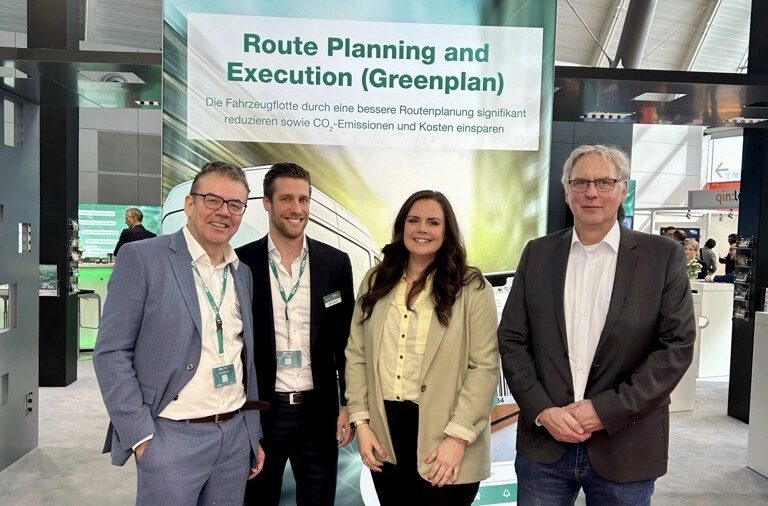For all businesses, especially in the retail sector, the threat of uncertainty casts a dark cloud over the customer delivery experience, leading to doubts and anxieties at various touch points along the delivery journey. Whether it’s the unpredictability of delivery service, or the lack of communication during critical moments, uncertainty will impact how customers perceive and interact with a brand.
Andrew Tavener (pictured), Head of Marketing, Descartes, believes that it is crucial for retailers to understand why uncertainty over deliveries affects consumers and how to implement strategies that mitigate its negative effects. This is essential for businesses that are aiming to foster long-term customer loyalty and success.
Understanding uncertainty in the customer delivery experience
Uncertainty in the customer delivery process encompasses a range of factors such as vague delivery timelines, missed delivery windows, or unreliable communication regarding shipment status. All of these factors damage the customer’s experience and erode trust in the brand, losing potential future sales. In fact, Descartes’ recent home delivery research found that 67% of customers experienced a delivery problem over a three-month period.
The next factor contributing towards uncertainty in the delivery journey is communication relating to any arising issues. Inadequate communication channels, delayed responses to inquiries, or lack of updates during critical moments of the home delivery process will leave consumers feeling neglected and undervalued. This has led to 63% of customers in 2024 taking some form of negative action against the retailer or delivery company following a problem with a delivery.
How to fix uncertainty in customer delivery experience
One of the most frustrating experiences for a customer is feeling trapped while waiting for a delivery that could arrive at any time during the day. This uncertainty can disrupt their plans and cause frustration. A better approach for businesses would be to invest in processes and solutions that help to alleviate this uncertainty and ensure that a positive customer experience is created and maintained throughout the purchase and the delivery process. Here are just a few tactics retailers could focus on to help them minimise customer uncertainty and improve the delivery experience:
• Clear Communication
Setting expectations that can be met and clear communication are the first things to consider when looking to deliver a seamless customer experience. This is because it enables your business to provide customers with clear, accurate, and concise delivery information at every stage of the journey to set expectations, keep them appraised of progress and reduce customer anxiety.
• Appointment Booking
An effective delivery appointment booking tool will ensure that delivery cost, speed and incremental service options are transparent and easily accessible, allowing customers to make the most suitable choice and have a definite delivery time. Industries such as furniture and building materials rely on appointment-based scheduling. Uncertainty regarding appointment availability, confirmation, or cancellations will lead to frustration and dissatisfaction among customers.
• Engage Through Execution
An initial email to let a customer know what date you’ll be arriving is no longer good enough. Retailers must proactively communicate the status of customer orders throughout the delivery process (e.g. staged at warehouse, out for delivery, the next stop, etc.) including the original delivery plan and estimated time of arrival (ETA).
• Proactive Problem-Solving
Customers do not expect perfection and resetting expectations is essential in maintaining good customer experience. Using real-time GPS location data and dynamic delivery route progress/ETA calculation anticipate and address potential uncertainties. Proactively communicate ETA changes to customers and corrective actions to be taken if there are unforeseen delays.
• Feedback Loop
And finally, encourage feedback from customers to identify areas of uncertainty and opportunities for improvement. Actively listen to customer concerns and implement necessary changes to enhance the overall experience.
Retailers can take advantage of proven technology to enhance visibility and communication throughout the delivery journey by Implementing an integrated delivery appointment booking, route planning, dispatch and tracking system with customer notification apps to keep customers informed and engaged.
These technologies allow customers to know when to expect their delivery – from the time they place the order and proactively notify them of progress, as well as providing updated revisions to the delivery time. By empowering customers with visibility and control over their deliveries, appointment booking software transforms the customer experience, turning uncertainty into confidence and peace of mind.
There’s no denying that uncertainty can be a significant barrier to providing exceptional customer delivery experiences. So, by understanding the various forms of uncertainty that can arise throughout the customer journey, and by implementing effective strategies to address them, and leverage proven delivery solutions, retailers can instead look to foster trust, loyalty, and satisfaction among their customers with better customer communications. Reducing uncertainty leads to happier customers, stronger brand relationships, and ongoing future success that has a positive impact on the bottom line.
Similar News…







